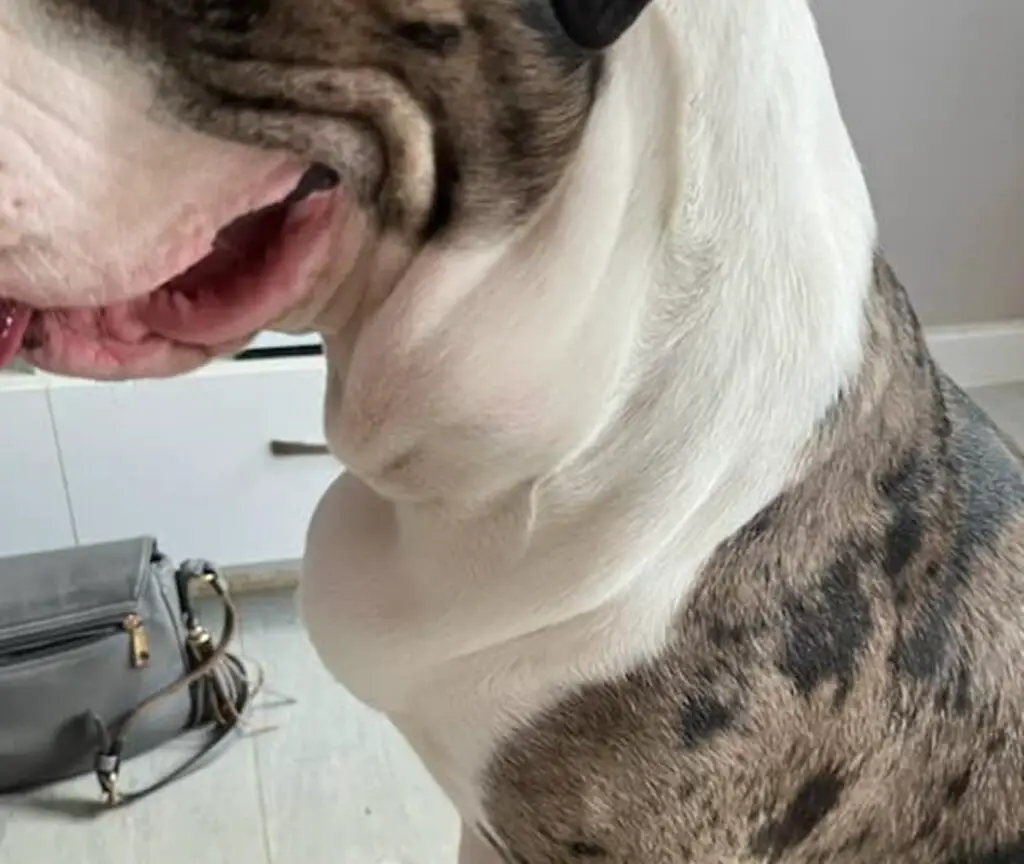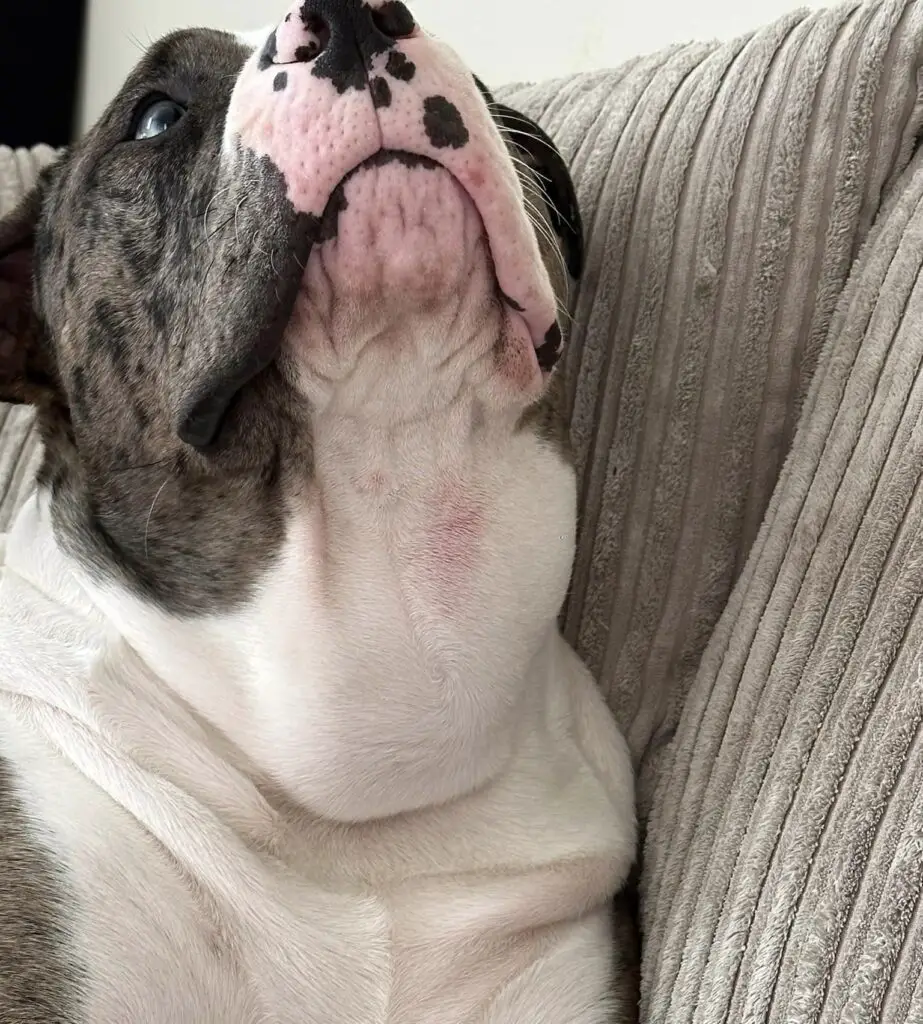Ventral Superficial Cervical Lymph Nodes in dogs are vital lymph nodes located in the neck of dogs.
These nodes play an important role in fighting off infections and controlling inflammation, and they can be easily palpated or felt with the fingers.
In this blog post, we will discuss why these nodes are so important to dogs, what causes them to become enlarged, and how they are diagnosed.
- Key Takeaway
- Do Dogs Have Superficial Cervical Lymph Nodes?
- What Are The Superficial Lymph Nodes of Dogs?
- Where Are The Superficial Cervical Lymph Nodes In a Dog?
- Where Do Dog’s Superficial Cervical Lymph Nodes Drain?
- Causes of Enlarged Superficial Cervical Lymph Nodes In Dogs
- Symptoms of Enlarged Superficial Cervical Lymph Nodes In Dogs
- Diagnosis of Enlarged Superficial Cervical Lymph Nodes In Dogs
- Treatment of Enlarged Superficial Cervical Lymph Nodes In Dogs
Key Takeaway
- Dogs have superficial cervical lymph nodes, also known as prescapular lymph nodes, located in the area where the neck and shoulder meet.
- Dogs’ superficial cervical lymph nodes drain the skin of the masseter region, the antebrachial fascia, most of the shoulder muscles, and the skin and subcutaneous tissue of the caudal regions of the head and auricle.
- Enlarged superficial cervical lymph nodes in dogs can be caused by various factors such as malignancies, infections (bacterial, viral, fungal, parasitic), autoimmune disorders, iatrogenic causes, and other miscellaneous conditions like allergies and inflammation from injuries or diseases affecting the immune system.
Do Dogs Have Superficial Cervical Lymph Nodes?

Yes, dogs do have superficial cervical lymph nodes, also known as prescapular lymph nodes.
These nodes are located in front of the shoulder blade where the neck and shoulder meet.
They often lie adjacent to or under the superficial muscles in the neck and are easiest to palpate when the dog is standing.
The superficial cervical lymph nodes play a crucial role in draining lymphatic fluid from various parts of the body and are part of the immune system’s defense mechanism.
See also: What Do Dog Lymph Nodes Feel Like?
What Are The Superficial Lymph Nodes of Dogs?

Dogs have several superficial lymph nodes that are palpable, which include the mandibular, superficial cervical (prescapular), and popliteal lymph nodes.
The superficial cervical lymph nodes are located just in front of the shoulder blade where the neck meets the shoulder.
These nodes can be large in some dogs, up to 7.4 cm long, 3.4 cm wide, and 2.1 cm thick.
See also: Can Dogs Lymph Nodes Swell From Allergies?
Where Are The Superficial Cervical Lymph Nodes In a Dog?
The superficial cervical lymph nodes in a dog are typically located just below the skin and the neck fascia, within a triangle area formed by the M. trapezius cervicalis.
These nodes are palpable and can be found just cranial to the scapula, or shoulder blade. The region can be first identified by palpating the point of the shoulder.
The lymph node is positioned medial to the omotransversarius muscle and subscapularis muscle.
In a normal dog, these lymph nodes are easiest to palpate when the dog is standing, and one would gently palpate over the cranial shoulder joint.
See also: Can Dogs Live Without Lymph Nodes?
Where Do Dog’s Superficial Cervical Lymph Nodes Drain?
The superficial cervical lymph nodes in a dog drain the skin of the masseter region, the antebrachial fascia, most of the shoulder muscles, and the skin and subcutaneous tissue of the caudal regions of the head and auricle.
There are two main pathways for this drainage.
The first pathway runs toward the ventral superficial cervical lymph node, and the other pathway crosses the ventral midline, connecting to the contralateral side.
Eventually, the lymph fluid re-enters the bloodstream, where the lymphocytes from the lymph node enter the lymph and travel to other areas of the body.
See also: How Big Are Dog Lymph Nodes?
Causes of Enlarged Superficial Cervical Lymph Nodes In Dogs
- Malignancies: Certain types of cancer, including lymphoma, can cause enlargement of the superficial cervical lymph nodes in dogs.
- Infections: Bacterial, viral, fungal, and parasitic infections can lead to swollen lymph nodes.
- Autoimmune disorders: Conditions such as lupus, immune-mediated hemolytic anemia (IMHA), and polyarthritis can cause lymphadenopathy or swollen lymph nodes.
- Iatrogenic causes: These are problems caused by medical examination or treatment. For instance, an injection site reaction could potentially cause localized lymph node swelling.
- Other miscellaneous conditions: This could include things like allergies, inflammation from injuries, or other diseases that affect the immune system.
- Localized issues: Swollen lymph nodes in a specific area, like the superficial cervical lymph nodes, can often be due to a local issue such as a respiratory infection or dental disease.
Symptoms of Enlarged Superficial Cervical Lymph Nodes In Dogs
- Swelling in the neck area: One of the most common signs is a noticeable swelling or lump in the neck region near the shoulder blades.
- Loss of appetite: Dogs with enlarged lymph nodes may show signs of decreased appetite or difficulty swallowing due to discomfort in the neck area.
- Lethargy: Dogs may show signs of fatigue or lack of energy.
- Fever: An elevated body temperature may indicate an infection or inflammation, which could be related to enlarged lymph nodes.
- Changes in behavior: Dogs might exhibit changes in behavior such as increased irritability or depression.
- Pain or discomfort: Some dogs might show signs of pain or discomfort, especially when the neck area is touched.
Diagnosis of Enlarged Superficial Cervical Lymph Nodes In Dogs
Diagnosing enlarged superficial cervical lymph nodes in dogs includes:
Physical Examination
The diagnosis of enlarged superficial cervical lymph nodes in dogs often begins with a thorough physical examination by a veterinarian. The vet will palpate the area to determine the size and location of the swelling.
Medical History
A comprehensive medical history is also crucial for diagnosis. The vet will ask questions about any noticeable changes in your dog’s behavior, eating habits, or overall health.
Blood Tests
Blood tests can be helpful in determining if there’s an infection or other systemic condition causing the lymph node enlargement. These tests may include a complete blood count (CBC), biochemical profile, and specific tests for infectious diseases.
Fine Needle Aspiration
A fine needle aspiration (FNA) may be performed to collect cells from the enlarged lymph node. This involves inserting a small needle into the node and drawing out fluid and cells for microscopic examination. This can help identify whether the enlargement is due to an infection, inflammation, or cancer.
Biopsy
In some cases, a biopsy may be required to get a more definitive diagnosis. This involves surgically removing a portion or all of the enlarged lymph node for detailed laboratory analysis.
Imaging
Imaging techniques such as X-rays, ultrasound, or CT scans may be used to visualize the extent of the lymph node enlargement and assess whether other lymph nodes or organs are involved.
Treatment of Enlarged Superficial Cervical Lymph Nodes In Dogs
Treatment of enlarged superficial cervical lymph nodes in dogs includes:
Antibiotics
If the cause of the enlarged lymph nodes is a bacterial infection, antibiotics are often prescribed to treat the infection and reduce the swelling. The specific antibiotic used may vary depending on the type of bacteria involved.
Antifungal Medication
In cases where a fungal infection is causing lymphadenopathy, antifungal medication will be administered. Again, the specific medication used will depend on the type of fungus identified.
Anti-Inflammatory Drugs
Anti-inflammatory drugs can be used to reduce the inflammation and swelling of the lymph nodes. These can include non-steroidal anti-inflammatory drugs (NSAIDs) or corticosteroids, depending on the severity of the inflammation.
Steroids
Steroids can be used to manage inflammation, particularly in cases of autoimmune diseases. They can also be used in some cases of cancer treatment.
Surgery
In some situations, surgical removal of the affected lymph nodes may be recommended. This could be the case if the lymph nodes are severely swollen or if they contain cancerous cells.
Chemotherapy
If the lymph node enlargement is due to cancer, particularly lymphoma, chemotherapy may be recommended as part of the treatment plan.
FAQs
Q: What are ventral superficial cervical lymph nodes in dogs?
A: Ventral superficial cervical lymph nodes in dogs are a specific group of lymph nodes located in the neck region.
Q: What is the role of lymph nodes in general?
A: Lymph nodes are small bean-shaped organs that play a vital role in the immune system. They filter lymph fluid and help to fight off infections by trapping and destroying harmful pathogens.
Q: How many ventral superficial cervical lymph nodes are there in dogs?
A: Dogs typically have two ventral superficial cervical lymph nodes, one on either side of the neck.
Q: What is the function of ventral superficial cervical lymph nodes in dogs?
A: The function of ventral superficial cervical lymph nodes in dogs is to filter lymph fluid from the head and neck region and assist in the immune response against local infections.
Q: How can I identify the ventral superficial cervical lymph nodes in a dog?
A: The ventral superficial cervical lymph nodes in dogs can usually be felt as small, round, and movable lumps under the skin on either side of the neck.
Q: Are there any other lymph nodes near the ventral superficial cervical lymph nodes in dogs?
A: Yes, there are other lymph nodes in the head and neck region of dogs, including the mandibular lymph nodes and the medial retropharyngeal lymph nodes, which also play a role in filtering lymph fluids from the surrounding areas.
Q: What is the lymphatic drainage pattern of ventral superficial cervical lymph nodes in dogs?
A: The ventral superficial cervical lymph nodes drain lymph fluid from the head and neck region. This includes the mandibular salivary glands, through a network of lymphatic vessels.
Q: Can the ventral superficial cervical lymph nodes in dogs be affected by diseases?
A: Yes, similar to other lymph nodes in the body, ventral superficial cervical lymph nodes in dogs can be affected by various diseases, such as infections, inflammation, or even cancer.
Q: Are there any diagnostic procedures involving ventral superficial cervical lymph nodes in dogs?
A: Yes, one diagnostic procedure involving ventral superficial cervical lymph nodes in dogs is a lymph node biopsy, where a small sample of the lymph node tissue is collected and examined under a microscope to determine the cause of any abnormalities.
Q: Can ventral superficial cervical lymph nodes in dogs be surgically removed?
A: In some cases, if necessary, ventral superficial cervical lymph nodes in dogs can be surgically removed as part of a lymph node dissection or as a part of a larger surgical procedure.
In Conclusion
In conclusion, understanding the anatomy and physiology of ventral superficial cervical lymph nodes in dogs can be quite useful for veterinary professionals.
Not only can it help with diagnosis and treatment, but it can also aid in the prevention of future diseases or illnesses.





Leave a Reply